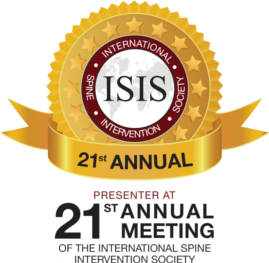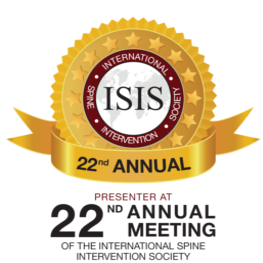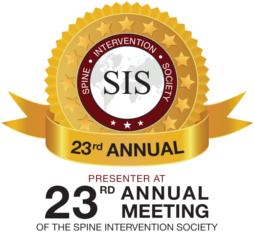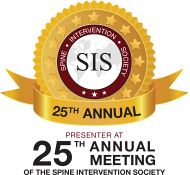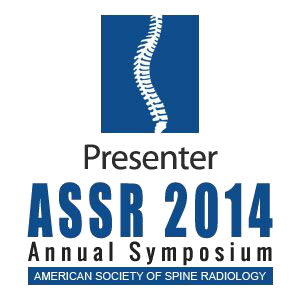Spinal stenosis occurs when the space in your spinal canal narrows, compressing your lumbar spine nerves. It is one of the leading causes of severe back pain reported by many people across the world. The pain also radiates to your legs, affecting your mobility and the ability to perform regular tasks.
Fortunately, lumbar stenosis is treatable. Doctors have many treatments, including medication, physical therapy, and surgery. A decompression laminectomy is a widespread solution recommended only after medication and physical therapy fail to yield the expected relief. Doctors also recommend decompression laminectomy if you experience severe symptoms of spinal stenosis, including bladder and bowel incontinence or numbness or weakness in your legs that affects your mobility.
A back pain expert is the right person to talk to if you experience severe back pain or are diagnosed with spinal stenosis. They will review your treatment history, explain why you require surgery, take you through the treatment process, and prepare you for what to expect during and after surgery.
An Overview of Spinal Stenosis
This condition occurs when the spaces within your spine narrow, squeezing and compressing the spinal cord and the nerves around it. The narrowing and compression of the nerves results in excruciating back pain, weakness, numbness, and other symptoms. While people of all ages can be diagnosed with spinal stenosis, this condition is more common in people aged 50 or older.
There are several causes of spinal stenosis, including the following:
- Degenerative changes as you age, whereby your spinal disk dries out and shrinks. This can cause ligament thickening and bone spurs, narrowing the space in your spine.
- Arthritis, mainly when it affects the spine, can cause the formation of bone spurs around it, narrowing the spinal canal.
- Congenital conditions in which individuals are born with a narrower spinal canal than normal. This increases their risk of spinal stenosis as they age.
- An injury, especially a severe blow to the back, or accelerated wear or tear of your spine, can result in narrowing and compression of the spinal canal.
- A tumor in your back can also cause symptoms of spinal stenosis
- A herniated spinal disc can also cause spinal stenosis. It occurs due to degeneration or injury. It happens when the soft, jelly-like center of your spinal disc pushes through its tough outer layer
Severe back pain and other symptoms of spinal stenosis can also occur due to a spinal injury, for example, in a sports injury. This will mainly affect athletes. Athletes are more susceptible to catastrophic spinal injuries, which result in the structural failure of their vertebral column. Such injuries are not usually related to or caused by spinal stenosis. However, they cause you to suffer symptoms similar to those of spinal stenosis. A proper diagnosis is recommended to determine your injury's actual cause and extent for effective treatment.
Common Symptoms of Spinal Stenosis
When you experience back pain that radiates to your legs, you should visit a doctor immediately for proper diagnosis and treatment. Generally, back pain escalates with time, especially if the underlying issue is spinal stenosis or a similar severe condition. Symptoms for such conditions start mildly and then escalate when you delay treatment. Some of the indications you could have spinal stenosis include the following:
- A back pain that starts mildly and worsens with time, especially with increased activity. You could experience relief from pain when you lean forward.
- Pain, weakness, or numbness in your legs or feet, mainly due to compressed nerve roots
- Cramping of your legs, especially when walking or standing
- Sciatica is pain that radiates to the legs. This mainly occurs due to compressed nerve roots
- Unsteadiness or difficulty walking, or dropping things because of the numbness or weakness you experience in your legs or feet
Non-surgical Treatment for Spinal Stenosis
When you seek treatment after experiencing severe pain in your back, legs, or feet, a doctor can recommend medications like muscle relaxants and pain relievers to manage your symptoms. The treatments you receive will depend on the symptoms you mention to the doctor.
Sometimes doctors recommend physical therapy to improve flexibility, alleviate pain, strengthen your back muscles, and restore mobility.
Bracing can also support your spine and reduce pressure on the compressed nerves. This can relieve pain and restore mobility.
These treatments can help if your spinal stenosis is minor. However, you will need surgical treatment if your symptoms escalate or when these treatments fail to relieve your back pain and the other symptoms you are experiencing.
Decompression Laminectomy for Spinal Stenosis
This is a common way to treat spinal stenosis when you do not obtain the desired results from physical therapy and medication. Since it is a surgical procedure, your doctor will recommend it as a last resort when you continue to experience severe symptoms after treatment with medicine and other interventions. Laminectomy is also a treatment option when spinal stenosis leads to severe complications like bladder or bowel incontinence or severe numbness and weakness of the legs that affect your mobility.
Decompression laminectomy is a surgical procedure that involves removing the lamina—the back part of a vertebra—and possibly other structures like bone spurs or ligaments to relieve pressure on the spinal cord or nerves. The procedure also removes a thick layer of ligamentum flavum to free the space around your spinal column and relieve the compressed nerves. Remember that spinal stenosis occurs when the space around the spinal canal narrows. Enlarging this space relieves any pressure in and around the spine, decompressing the nerves and relieving you of your back pain.
The treatment mainly relieves pressure by creating more space within your spinal canal. This reduces pressure on the spinal cord and the affected nerve roots. Consequently, it can treat various conditions, including herniated discs, injuries, tumors, and spinal stenosis. The procedure works very well in relieving the severe symptoms you have experienced for a very long time due to spinal stenosis, including pain, discomfort, pressure, and numbness in the legs.
Remember that doctors recommend decompression laminectomy as a last resort, once other less-invasive treatments fail to relieve your symptoms. Therefore, your doctor will suggest this procedure after reviewing your treatment history and conducting a proper examination to determine the cause of your back and leg pain. They will prepare you for the procedure, including how it is performed and what to expect after treatment, to inform your decision-making. If you have had to endure back pain for a long time, and it is now affecting your mobility and causing you other complications, like bladder incontinence, decompression laminectomy can help.
Preparing for Decompression Laminectomy
Any treatment for spinal stenosis starts with diagnosis. With so many causes of back pain, your doctor must ensure that you receive the proper treatment for the actual cause. A correct diagnosis is made after a thorough examination to determine the location and cause of your back pain. Your doctor can perform a physical exam during your initial visit to the hospital to assess the kind, degree, and location of your back pain. A physical exam will also evaluate your range of motion and neurological function.
The doctor can order or run some imaging tests to determine the cause of your pain. An X-ray can be conducted on your back to show how bones have changed in your back and the narrowing that has caused the spinal stenosis. An MRI will provide a detailed image of your spinal cord, including the nerves and soft tissues. This will help the doctor strategize the best treatment approach for your problem. The doctor can also use a CT scan to understand your bone changes better.
Laminectomy is generally an invasive procedure, although it can be performed as a minimally invasive procedure. Your doctor will take you through the preparation process to ensure the procedure goes as smoothly as possible. For example, they recommend not eating or drinking anything a few hours before the procedure. Your doctor will also take note of the medications you are currently taking and advise against taking particular ones that could interact with your treatment or anesthesia. It helps to take note of these preparation instructions, as they will contribute to a smooth process once treatment starts.
Generally, the procedure is conducted under general anesthesia. Your surgeon will administer anesthesia to keep you relaxed, asleep, and comfortable throughout the treatment. Since the surgery will be done on your back, you will lie face down to give the surgeon enough room to access the problem. A minimally invasive procedure will include making a minor incision in the back at the strategic location of the genesis of your back pain. The incision allows the surgeon to insert surgical instruments and, in minimally invasive procedures, a camera to assist in performing the surgery.
The Procedure
The decompression procedure entails removing the bones and ligaments that are narrowing your spinal cord. If spinal instability is a concern, the surgeon may perform a spinal fusion in addition to laminectomy, which involves inserting bone grafts and securing them with screws. If you have a herniated disc or arthritis, this procedure can create excess movement between your vertebrae. If this will cause you problems, your surgeon will perform another procedure (spinal fusion), which entails fusing multiple vertebrae to stabilize your spine.
Once the procedure is over, the surgeon will allow you some time to heal. You could stay for a few days in a hospital, after which you will return home to rest and recover fully. Your doctor can send you home with some pain medication for a few days or until you are no longer in pain. They could also recommend physical therapy after full recovery to strengthen your core, enhance flexibility, and restore mobility.
Decompression laminectomy can provide significant symptom relief for many patients, though the extent and timing of improvement can vary. Your pain will decrease significantly, and you can recover some mobility a few days after the treatment. Once you are no longer in pain, you can incorporate physical therapy to increase your walking distance and restore your ability to perform daily tasks. If the procedure goes well, you should resume normal operations after a few weeks. However, avoid strenuous tasks until your back muscles and core strength improve.
Laminectomy can have a high success rate. Many people who have undergone the procedure have reported a significant improvement in their symptoms a few hours or days after the procedure. The procedure can lead to a substantial reduction in your pain and improve the quality of your life. You should regain your abilities soon after treatment. Thus, if your numbness and back and leg pain have prevented you from engaging in sports or fun activities, you should recover fully to enjoy those after the procedure.
Possible Risks
This is a relatively safe procedure, with minimal risks. Its potential for complications is also very low. However, you could experience some side effects after the procedure.
For example, if you are allergic to anesthesia, you could suffer an allergic reaction during or after treatment. Remember that this is a procedure you need to undergo while under anesthesia to numb the associated pain and keep you relaxed throughout the process. Let your doctor know about such an allergy beforehand so they can take the necessary precautions to protect you.
You could also be at risk of an infection after treatment. Remember that treatment involves making a small incision on your back to access the problem. An incision or cut on your skin can easily become infected if you do not take good care after treatment. An infection will be painful and could also cause you to experience symptoms like chills and severe headaches. You should seek immediate treatment for an infection before it spreads to other body parts.
Some people experience excessive bleeding after a decompression laminectomy. Although minimal bleeding is expected, especially after a non-invasive surgery, you could bleed more than you should. You should report this issue to your doctor immediately when it happens. Also, bleeding should reduce and stop a few days after treatment. If it persists, you should seek treatment.
Other associated risks include injured nerves, blood clots, and leakage of spinal fluid. You should seek treatment immediately if you notice something unusual after the procedure. If your pain persists or you experience a new symptom, it could be a sign that something is not right with your treatment.
After Treatment Care for Decompression Laminectomy
After undergoing this surgical treatment for spinal stenosis, your doctor or surgeon will send you home with some instructions to promote your healing and keep your back strong and stable. It is essential to follow these instructions carefully for proper recovery. Some instructions include managing your pain, keeping the incision dry and clean, and avoiding activities that could strain your back. Here are some aftercare tips you should highly consider:
- Take your pain medication as instructed by the doctor. Do not exceed the prescribed dosage or extend treatment without your doctor’s approval. If you continue experiencing pain after completing the dosage, consult with your doctor before obtaining more drugs over the counter.
- Take good care of the incision on your back by cleaning and keeping it dry. This helps prevent the risk of infection, which can affect your overall health. The doctor will instruct you on when to shower, how to clean the wound, and what to apply to promote healing. They could advise against soaking in a pool or bathtub until the incision completely heals.
- Ensure you get adequate rest before resuming your daily activities. Once you are ready, start with minor tasks and gradually increase the intensity of your daily tasks. Minimize bending, twisting, and lifting until your body is strong enough to perform such tasks.
- If you consider physical therapy, or your surgeon recommends it, follow the instructions your physical therapist will give. Also, incorporate physical activities into your life gradually.
- Maintain a balanced diet and stay well-hydrated
- Attend scheduled appointments with your doctor for follow-up. Your doctor will examine you to ensure you recover well after the procedure. They will also evaluate the success of the procedure in treating spinal stenosis.
- Watch out for any signs of complications after the surgery. For example, watch out for signs of excessive bleeding, an infection, or excess pain, and report it to the doctor immediately after you notice it.
Find a Competent Neurointerventional Surgeon Near Me
If you or someone you love has spinal stenosis in Los Angeles, decompression laminectomy can help. This is an excruciating condition that affects your strength and stability. The pain also radiates to the legs, affecting your mobility and the ability to perform everyday tasks. If you have been treated using medicine or physical therapy and you are still in pain, a competent doctor can recommend a laminectomy.
At LAMIS, we recommend surgery as a last resort, after all other treatments have failed to provide relief from back pain. A minimally invasive surgery can correct the problem on your back by creating adequate space in your spine to relieve compressed nerve roots. This will instantly reduce your pain and other symptoms you have been experiencing. We can explain and guide you through the treatment process to prepare you for what to expect. Call us at 310-734-6088 for more information about spinal stenosis, decompression laminectomy, and our services.

